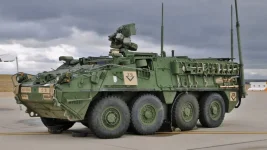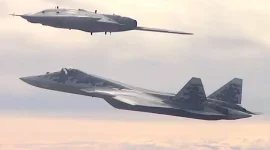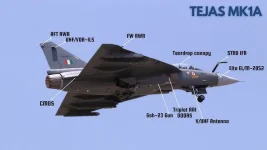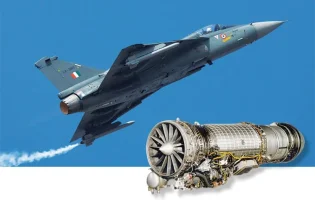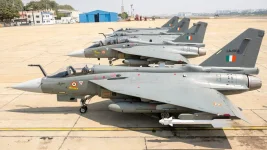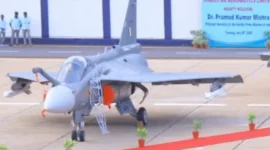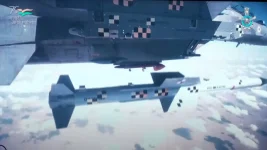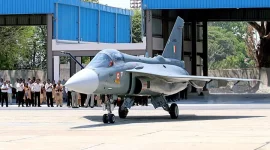India's indigenous aerospace programme is set to achieve a major milestone in early August 2025, as Hindustan Aeronautics Limited (HAL) prepares for the first live-fire test of the Astra Mk1 missile from the advanced Tejas Mk1A fighter jet.
The confirmation of this crucial test by HAL Chairman and Managing Director, DK Sunil, signals a significant advancement in integrating homegrown weaponry on the updated Light Combat Aircraft (LCA), a cornerstone of the nation's air defence strategy.
The Astra Mk1, an indigenous Beyond Visual Range Air-to-Air Missile (BVRAAM) developed by the Defence Research and Development Organisation (DRDO), has previously been validated on the older Tejas Mk1 variant.
However, the upcoming test is critical because the Tejas Mk1A features a suite of significant upgrades, most notably a new Digital Flight Control Computer and the Israeli ELTA Systems' advanced ELM-2052 Active Electronically Scanned Array (AESA) radar.
These new systems require a complete re-certification of the aircraft's weapon systems to ensure they perform together seamlessly.
At the heart of the Tejas Mk1A's enhanced combat capability is the ELM-2052 AESA radar.
Unlike older mechanically scanned radars that physically move to track targets, an AESA radar uses a matrix of hundreds of small transmit/receive modules to steer its beam electronically.
This technology provides a substantial advantage in modern aerial warfare, offering a longer detection range, the ability to track multiple targets simultaneously, and superior resistance to electronic jamming by enemy forces. This allows the pilot greater situational awareness and precision in combat.
According to HAL's leadership, the successful firing of the Astra missile using the new radar is one of the last major evaluations required before the Tejas Mk1A can be fully certified for operational service with the Indian Air Force (IAF).
The data gathered from this test will be vital for validating the performance of the entire weapon system and clearing the path for its deployment.
The successful integration will significantly boost the Tejas Mk1A's role as an air superiority fighter.
The Astra Mk1 missile, capable of engaging targets beyond 100 kilometres, provides the aircraft with a formidable stand-off capability, allowing it to neutralise hostile aerial threats from a safe distance.
This enhancement is particularly important for bolstering India's defence posture at forward airbases along its borders.
While the Tejas programme has previously encountered delays related to engine procurement and systems integration, HAL has affirmed its commitment to an accelerated delivery schedule. The company aims to deliver 12 Tejas Mk1A jets to the IAF during the 2025 calendar year.
In a sign of this progress, the first aircraft from HAL's second production line in Nashik is scheduled for rollout by the end of July 2025, complementing the primary production facility in Bengaluru. The IAF currently has an order for 83 Tejas Mk1A aircraft to modernise its fighter fleet.

